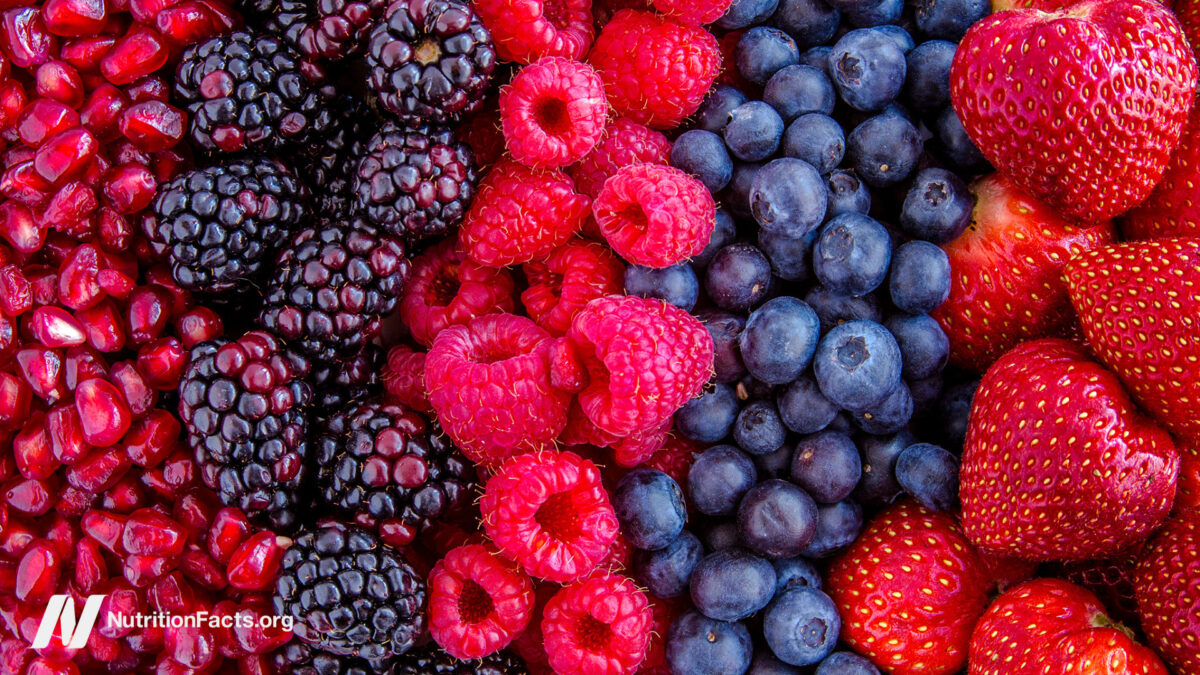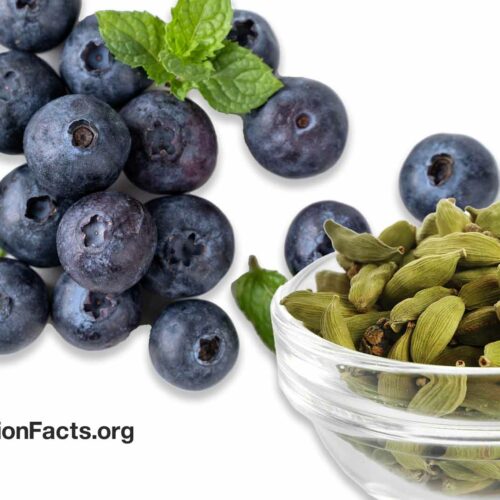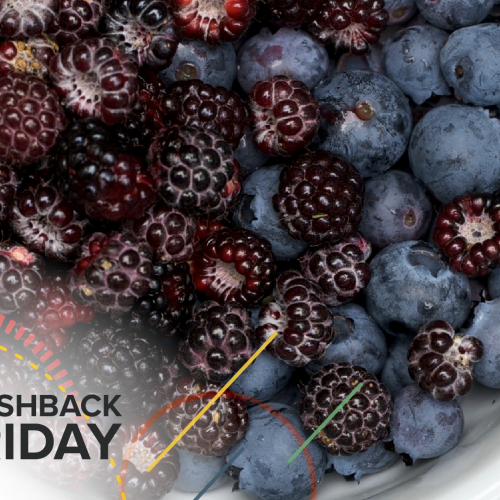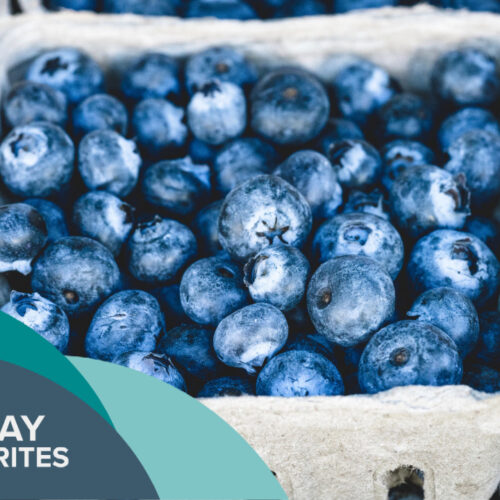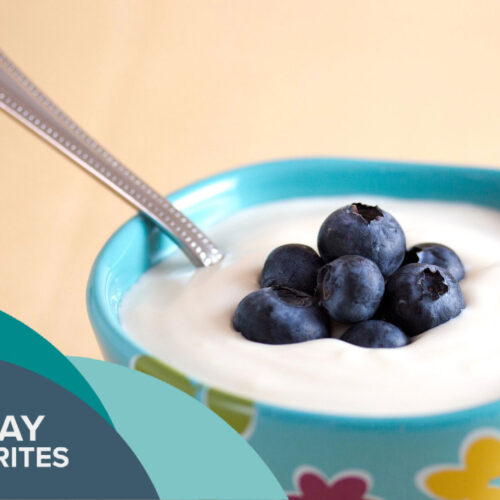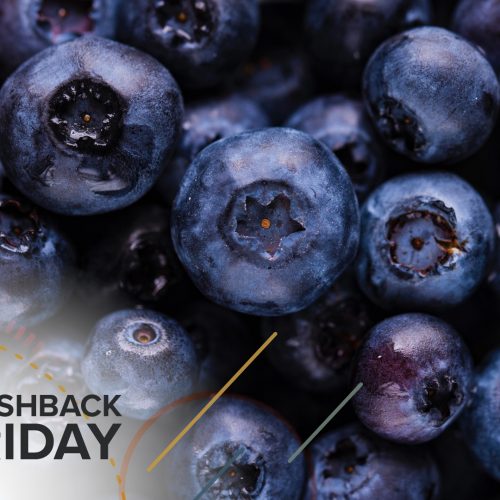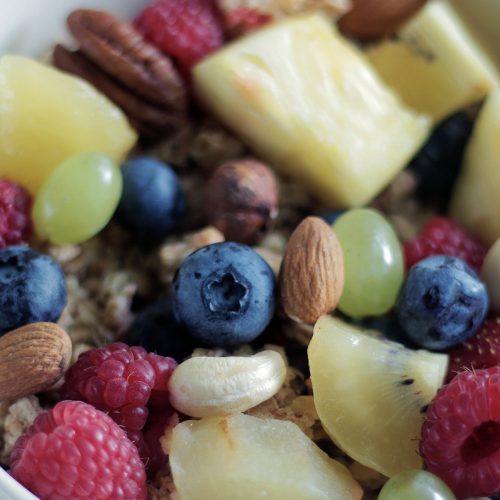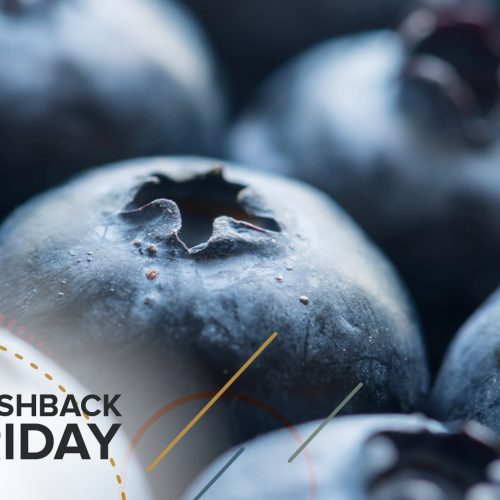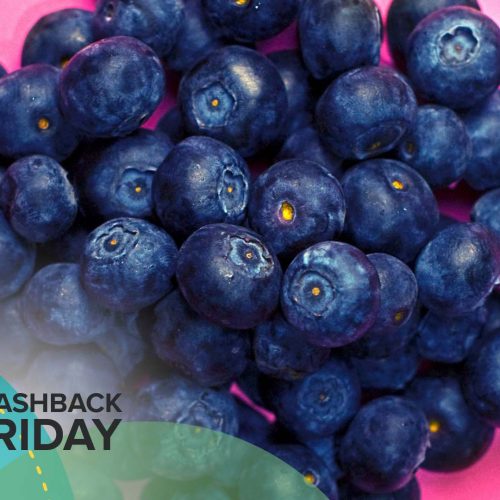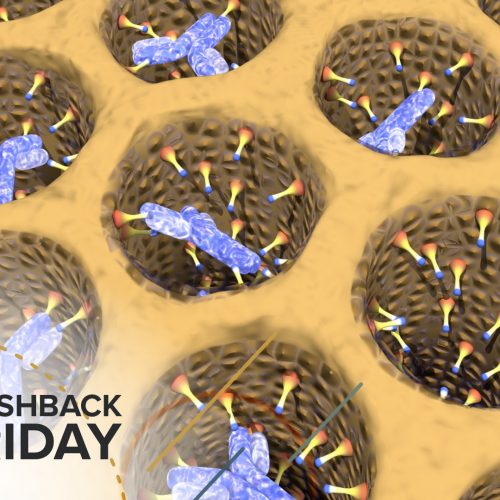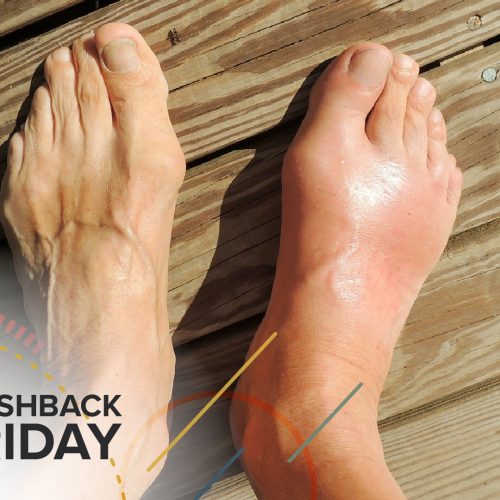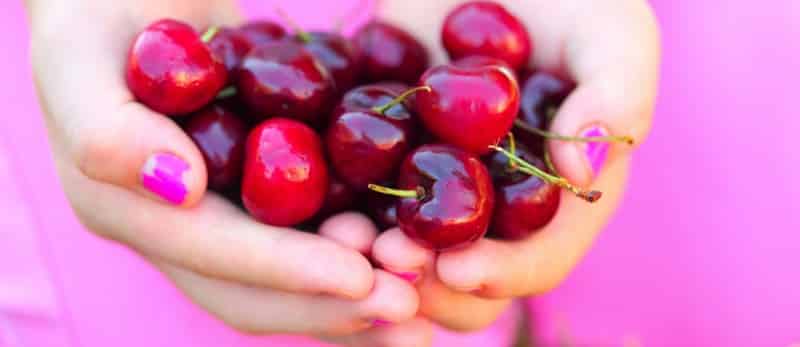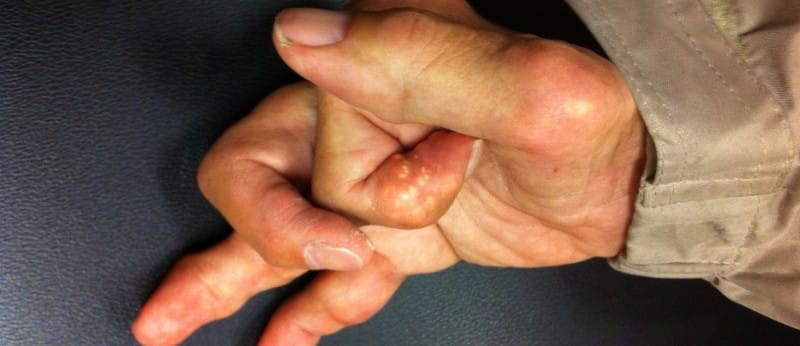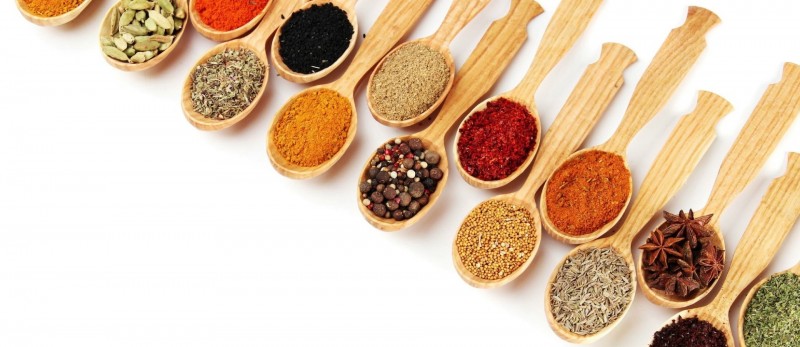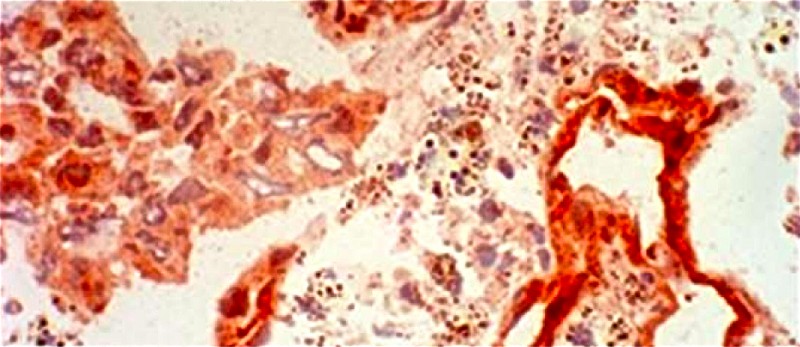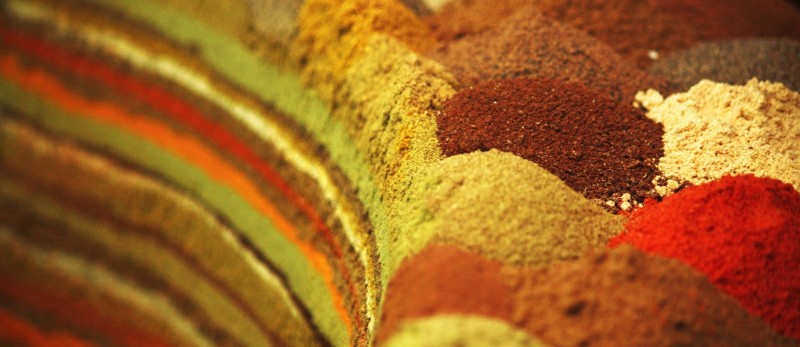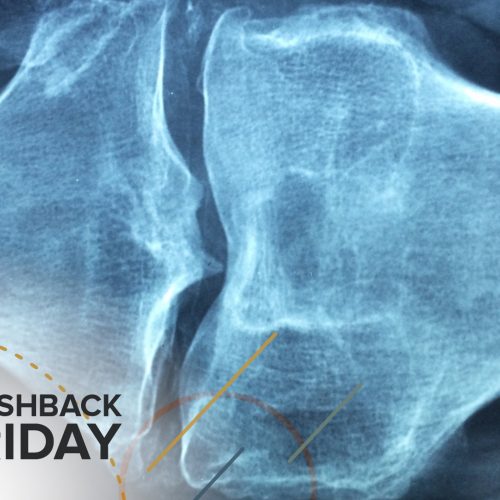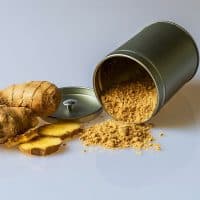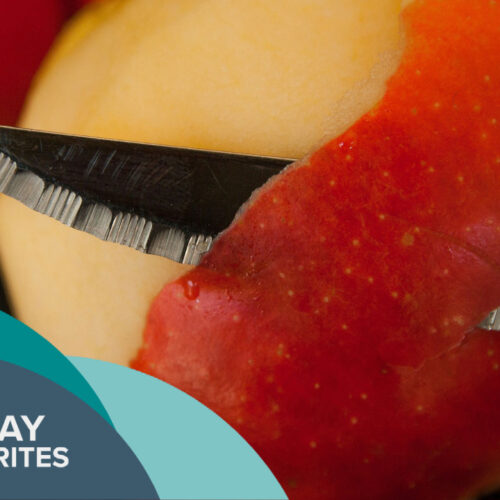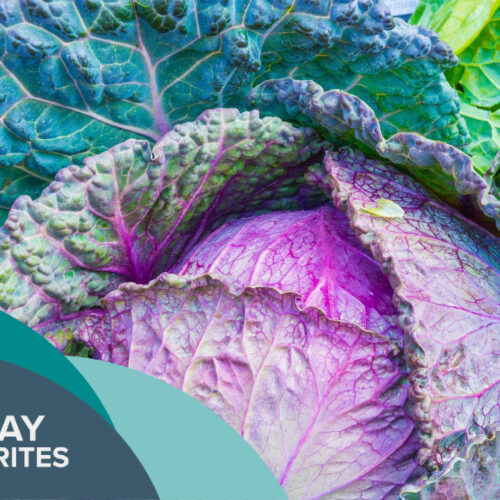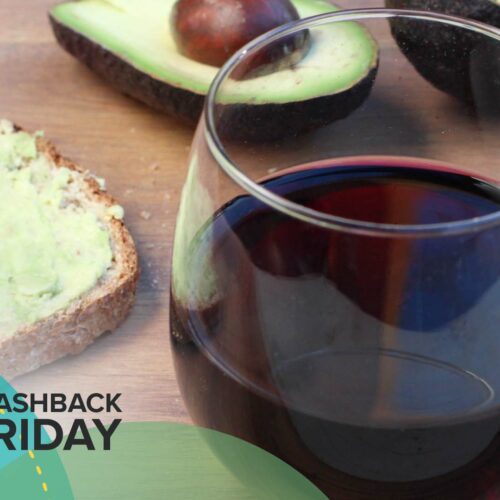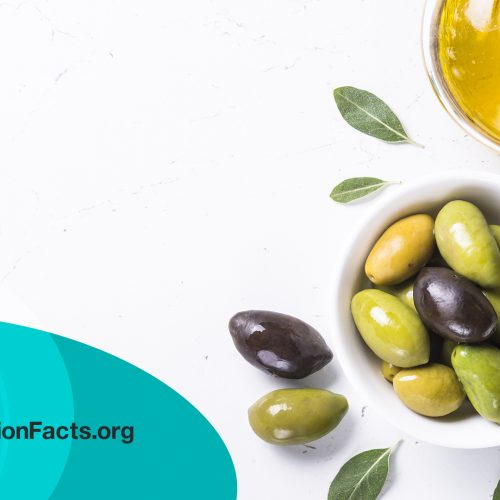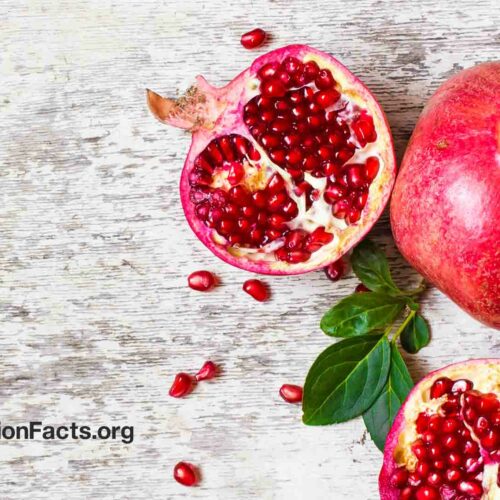What did double-blind, randomized, placebo-controlled trials on berries and the first clinical study on the effects of berries on arthritis find?
How might berries improve human health, healthy aging, and quality of life? It may be due to their anti-inflammatory effects, since inflammation can be an underlying contributing factor in the “development, progression, and complication” of a number of chronic diseases.
As I discuss in my video Berries for Inflammation and Osteoarthritis Treatment, higher intake of anthocyanins—the brightly colored pigments in berries—has been associated with anti-inflammatory effects, which “may be a key component” underlying the associated reduction in chronic disease risk. But these are all just associations. You can’t prove cause and effect until you put it to the test.
A double-blind, randomized, placebo-controlled trial found that blueberry smoothies could turn off inflammation genes. At 0:48 in my video and below, you can see a graph measuring the expression of pro-inflammatory genes in white blood cells taken from individuals before and after six weeks of drinking placebo smoothies without any blueberries. Those study participants in the placebo group got worse over time; six weeks later, more inflammatory chemicals were pouring out. In contrast, the blueberry group started out about the same at week zero, but after six weeks of daily blueberries, their expression of inflammatory genes went down.
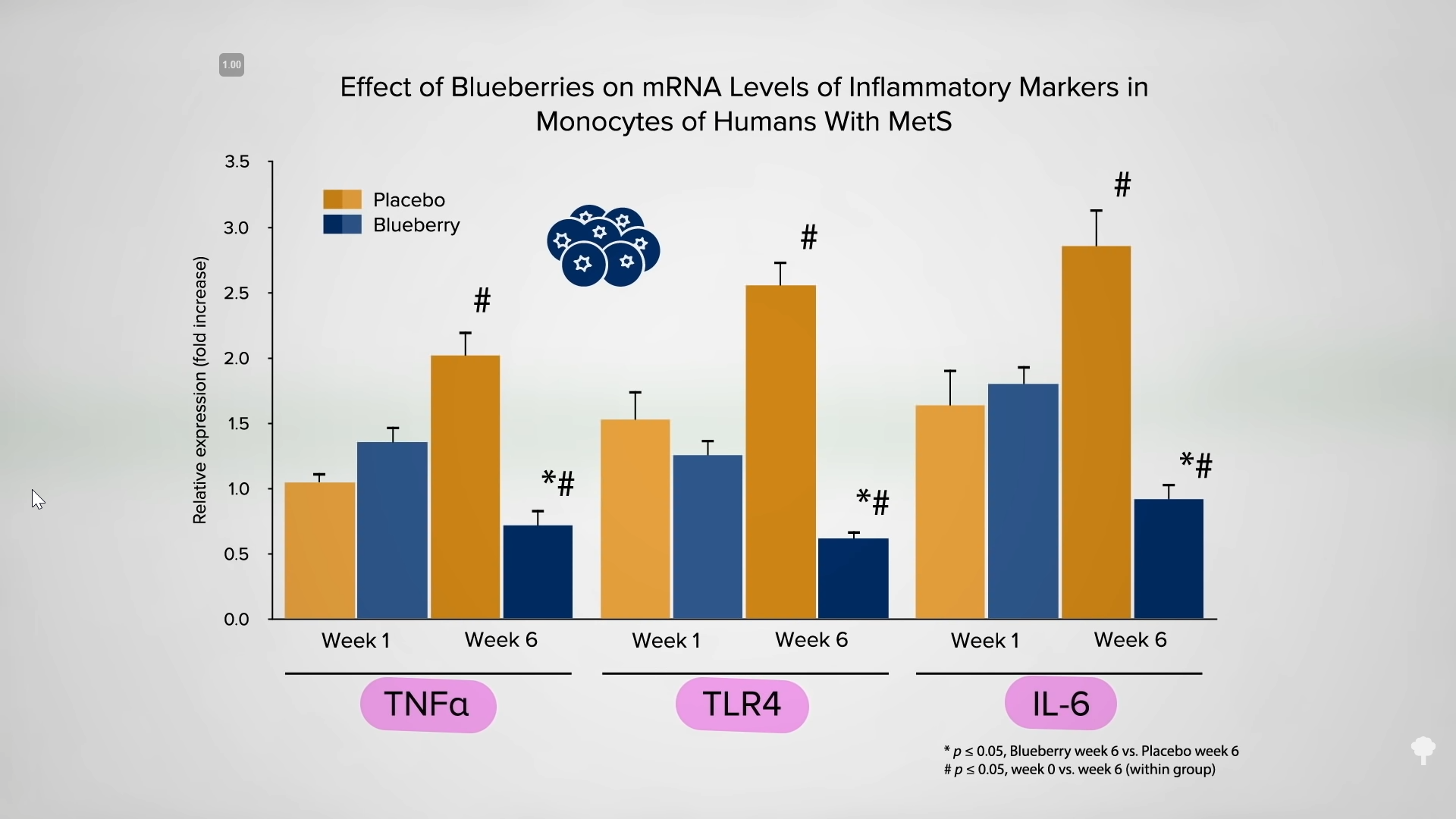
Wrote the researchers, “In addition to attenuating inflammation, our findings from this study demonstrate that blueberry consumption was able to significantly decrease the levels of free radicals in the whole blood,” the bloodstream. There was no change in the placebo group, but after six weeks of blueberry smoothies, the amount of free radicals in their blood was extinguished by half, as you can see in the graph below and at 1:27 in my video. Does all of that antioxidant and anti-inflammatory power actually translate into clinical benefits? For example, what is the effect of blueberry consumption on recovery after excessive weight lifting–induced muscle damage?

In a randomized cross-over study, participants were given either a blueberry smoothie or an antioxidant-matched placebo smoothie 5 and 10 hours before and again 12 and 36 hours after exercise-induced muscle damage. The smoothies were either about a cup and a half of frozen blueberries, a banana, and apple juice, or, for the placebo version, they were made without the berries but with added dextrose and vitamin C to match it for calories and antioxidant power. Even so, the blueberries worked better at mopping up free radicals. As you can see in the graph below and at 2:16 in my video, the oxidative stress without the blueberries went up and stayed up, but it came right down with the blueberries. Great, but we care about the recovery of muscle strength so we can jump right back into training. On blueberries, there was the same drop in peak torque 12 hours later, but a day later, there was a significantly faster restoration of peak muscle strength, demonstrating that the ingestion of blueberries can accelerate recovery, which may be especially relevant to athletes who compete over successive days.

That’s all well and good, but what about using berries to treat inflammatory diseases like arthritis? Yes, they may have protective effects against arthritis in a rat, significantly reducing “paw volume”—how swollen their paws get when injected with some inflammatory irritant, as you can see in the graph below and at 3:06 in my video—but there had never been any human arthritis berry studies until now.
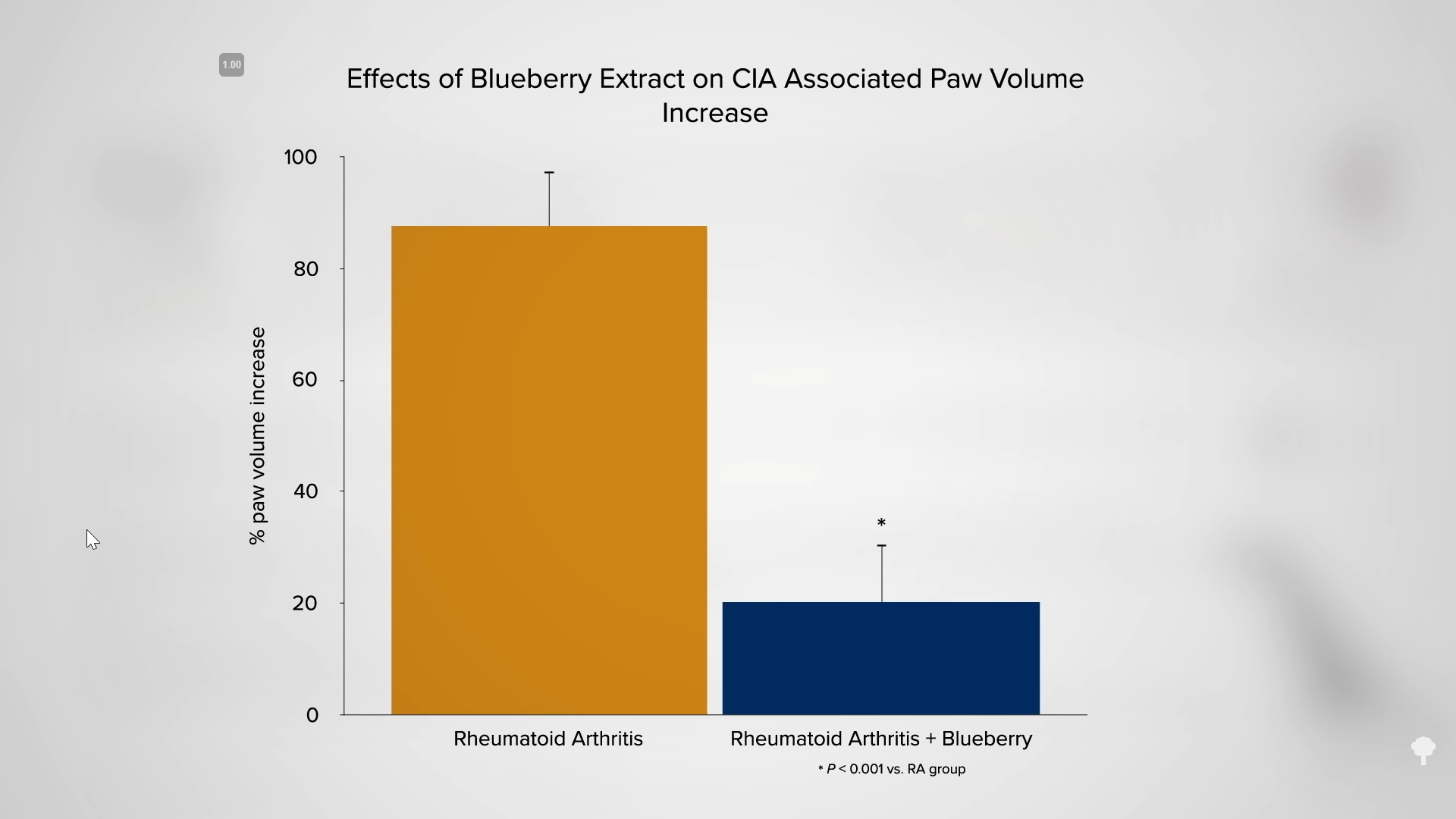 Remember that amazing study that showed that strawberries alone could reverse the progression of precancerous lesions? The strawberries were dramatically downregulating pro-inflammatory genes, as you can see in the graph below and at 3:27 in my video. Give strawberries for six weeks to people with diabetes, and not only does their diabetes get better, but their level of C-reactive protein, which is a marker of systemic inflammation, also drops by 18 percent, as you can see at 3:32 in my video.
Remember that amazing study that showed that strawberries alone could reverse the progression of precancerous lesions? The strawberries were dramatically downregulating pro-inflammatory genes, as you can see in the graph below and at 3:27 in my video. Give strawberries for six weeks to people with diabetes, and not only does their diabetes get better, but their level of C-reactive protein, which is a marker of systemic inflammation, also drops by 18 percent, as you can see at 3:32 in my video.

Even a single meal can help. As you can see below and at 3:46 in my video, if people eat a largely unhealthy breakfast, their level of inflammatory markers goes up over the next six hours—but less so if just five large strawberries are added to the meal.
 So, can strawberries improve pain and inflammation in confirmed knee osteoarthritis? Osteoarthritis patients were randomized to get about a pint and a half of strawberries a day for 12 weeks, and certain inflammatory markers plummeted, as you can see below and at 4:16 in my video. Did they actually feel any better, though? There were significant reductions in constant pain, intermittent pain, and total pain. The first clinical study on the effects of berries on human arthritis found that a “simple dietary intervention, i.e., the addition of berries, may have a significant impact on pain, inflammation, and overall quality of life in obese adults with OA [osteoarthritis].”
So, can strawberries improve pain and inflammation in confirmed knee osteoarthritis? Osteoarthritis patients were randomized to get about a pint and a half of strawberries a day for 12 weeks, and certain inflammatory markers plummeted, as you can see below and at 4:16 in my video. Did they actually feel any better, though? There were significant reductions in constant pain, intermittent pain, and total pain. The first clinical study on the effects of berries on human arthritis found that a “simple dietary intervention, i.e., the addition of berries, may have a significant impact on pain, inflammation, and overall quality of life in obese adults with OA [osteoarthritis].”

In my Daily Dozen, I recommend eating at least one serving of berries every day—either ½ cup fresh or frozen. What else can berries do? Check out the Related Videos below.
And, for more on arthritis and inflammation, see below.
